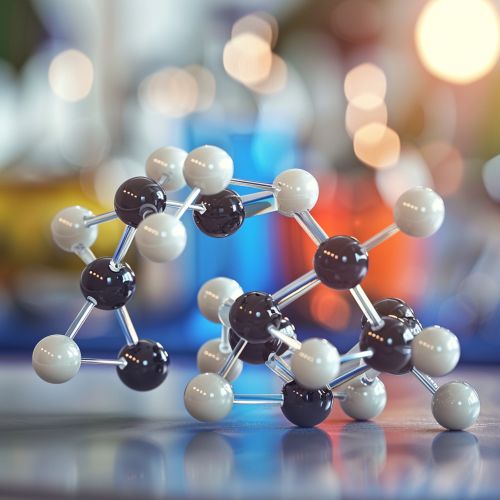Benzothiazepines: Difference between revisions
(Created page with "==Introduction== Benzothiazepines are a class of pharmacological compounds that are structurally related to benzodiazepines. They are primarily used in the treatment of cardiovascular diseases due to their calcium channel blocking properties. This class of drugs is known for their unique chemical structure, which includes a seven-membered thiazepine ring fused to a benzene ring. <div class='only_on_desktop image-previe...") |
No edit summary |
||
| Line 2: | Line 2: | ||
Benzothiazepines are a class of [[Pharmacology|pharmacological]] compounds that are structurally related to [[Benzodiazepine|benzodiazepines]]. They are primarily used in the treatment of cardiovascular diseases due to their calcium channel blocking properties. This class of drugs is known for their unique chemical structure, which includes a seven-membered [[Thiazepine|thiazepine]] ring fused to a benzene ring. | Benzothiazepines are a class of [[Pharmacology|pharmacological]] compounds that are structurally related to [[Benzodiazepine|benzodiazepines]]. They are primarily used in the treatment of cardiovascular diseases due to their calcium channel blocking properties. This class of drugs is known for their unique chemical structure, which includes a seven-membered [[Thiazepine|thiazepine]] ring fused to a benzene ring. | ||
[[Image:Detail-77623.jpg|thumb|center|A molecular model of a benzothiazepine compound, showing the seven-membered thiazepine ring fused to a benzene ring.|class=only_on_mobile]] | |||
[[Image:Detail-77624.jpg|thumb|center|A molecular model of a benzothiazepine compound, showing the seven-membered thiazepine ring fused to a benzene ring.|class=only_on_desktop]] | |||
==Chemical Structure== | ==Chemical Structure== | ||
Latest revision as of 19:07, 6 May 2024
Introduction
Benzothiazepines are a class of pharmacological compounds that are structurally related to benzodiazepines. They are primarily used in the treatment of cardiovascular diseases due to their calcium channel blocking properties. This class of drugs is known for their unique chemical structure, which includes a seven-membered thiazepine ring fused to a benzene ring.


Chemical Structure
The chemical structure of benzothiazepines is characterized by a seven-membered thiazepine ring fused to a benzene ring. This structure is similar to that of benzodiazepines, which have a seven-membered diazepine ring fused to a benzene ring. However, in benzothiazepines, one of the nitrogen atoms in the diazepine ring is replaced with a sulfur atom, resulting in a thiazepine ring. This subtle change in the chemical structure significantly alters the pharmacological properties of the compound.
Pharmacological Properties
Benzothiazepines primarily act as calcium channel blockers. They inhibit the influx of calcium ions into cardiac and smooth muscle cells, thereby causing relaxation of these cells. This action results in a decrease in heart rate, blood pressure, and myocardial contractility, making these drugs effective in the treatment of various cardiovascular diseases.
Medical Uses
The primary use of benzothiazepines is in the treatment of cardiovascular diseases. They are used to manage conditions such as hypertension, angina pectoris, and certain types of cardiac arrhythmias. Due to their calcium channel blocking properties, they are also used in the treatment of certain types of smooth muscle spasms.
Side Effects
Like all drugs, benzothiazepines can cause side effects. These may include dizziness, headache, flushing, and edema. In rare cases, they may cause serious side effects such as heart failure, severe hypotension, and arrhythmias. It is important for patients to discuss potential side effects with their healthcare provider before starting treatment with these drugs.
